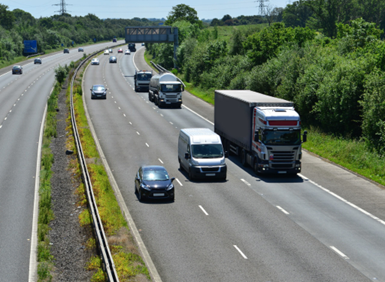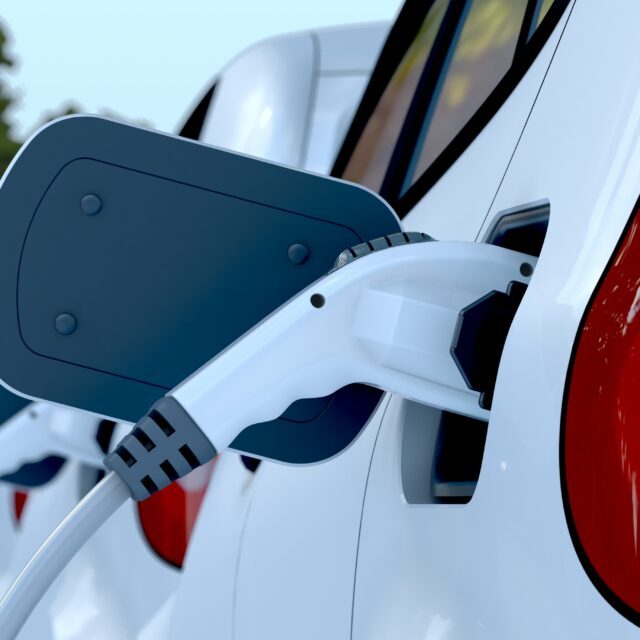In our blog, we explore several factors to keep in mind when measuring the true performance of electric vehicles.
How far your electric vehicle can go on a single charge will depend on several external factors, which aren’t always considered.
So you can get the most from your fleet, you need to understand the true performance of electric vehicles.

What impacts performance on a fully charged EV?
Both operational requirements and the real-world environment can all have a significant impact on actual mileage, the charge capacity and the performance of a vehicle. But what are these factors?
Heating and air conditioning
The temperature outside a vehicle can have an impact on the performance of an electric light commercial vehicle (e-LCV).
For example, drivers will use air conditioning to keep cool during warmer months and heat the vehicle’s cabin during the colder ones. This uses battery charge, reducing the expected performance, meaning there will be less mileage than expected.
This is also true for other equipment inside the vehicle, such as the radio and USB ports, which when in use can reduce the expected range – sometimes by up to 25%.
Scheduled routes
Both where your business is based and the routes your EV vehicles will take, can impact the expected performance.
More battery power is required when your fleet needs to travel up steep hills, especially when carrying a payload, compared to flat, straight roads with no cargo.
The state of some local roads could also influence the range and performance of your LCVs. From elevation and potholes to even rougher textured roads, these can all play a part in reducing speed and momentum, requiring your drivers to accelerate more to reach optimal speed.
This is especially true when compared to smoother-textured surfaces, which have lower rolling resistance, and therefore, lower fuel economy.
In our EVaaS (Electric Vehicles as a Service) offering, we can collect vehicle performance data to help you get actionable insights into how your fleet is performing, including driver performance, job allocations and much more.
Duty cycles
Depending on how much your vehicle is used (in terms of total miles and operation), it can affect the expected mileage. Each fleet vehicle will have a different driving profile compared to another, as it all depends on the route and drive cycle of the vehicle.
A vehicle that does short, rural drives will have a different output of performance than one which is driven on more urban roads.
At Rivus we can help you monitor fleet performance with our fleet consultancy and planning service. It allows us to advise you on the best fleet vehicles for your operational requirements.
Plus, once your fleet is established, we can even collect individual vehicle performance data and produce dashboards, so you can manage charging strategies and journeys effectively.
Power settings
Often, fleet vehicles will come with a range of driving power modes which include, ‘Power’, ‘Normal’ and ‘Eco’ modes.
Each will vary the number of miles a fleet driver will get from the charge. Certain power modes can deplete an e-LCV battery over others, sometimes reducing the range by 24%. We have tested the effects each of these power settings has on an expected charge and advise on the best power settings in our insight report, which can be downloaded below.
The payload of your e-LCVs
It’s unlikely that your fleet vehicle won’t ever be carrying additional payload. However, this additional weight can affect the expected charge given by original equipment manufacturers (OEMs), as the tests performed by OEMs are often in ideal and pristine conditions.
Additional weight, from passengers to the overall load the fleet vehicle is carrying, will reduce the expected range of a fleet vehicle, as it requires the battery to work harder to compensate.
Our real-world testing has found a 14.7% to 17.4% reduction in the total range at maximum payload. Exceeding weight limits for your fleet vehicle not only impacts the range, it can also apply unnecessary pressure to all aspects of your vehicle. This can worsen performance, meaning lower speeds are achieved and the risk of breakdown is increased.

Why Rivus tests in the real world
To support your business in transitioning to an electric fleet, we want to provide transparent information and advice on the true performance of vehicles. To do this, we perform ongoing, real-world testing to collect results to guide you best.
All tested vehicles are given to us from the OEM and are tested for four weeks – some of which we’ve even tested twice. We test a wide range of vehicles, including the Mercedes eSprinter, Vauxhall e-Vivaro, Toyota Proace City Icon, and more, so we can give you honest insights on vehicles which will best suit the needs of your fleet.
Our team has logged just under 1,000 hours of testing. We have now increased our vehicle testing to 20 vehicles, while doubling the number of tests completed from 206 to 487.
The miles covered in our tests has risen to over 14,900, allowing us to fully understand the strengths and weaknesses of each vehicle, from the Vauxhall e-Vivaro (2-size batteries) to the Vauxhall e-combo.
Since publishing our Testing EV performance insight report, we’ve continued to regularly test vehicles to provide more information and expert advice to our customers.
How can we support you?
Our insight report covers the results of our testing and proves that each vehicle performed differently under each condition – despite efforts to keep tests consistent.
This highlights the importance of understanding the true performance of electric vehicles and using vehicle consultancy and procurement experts such as Rivus’, so you get your EV fleet right from the start.
To see more of our findings and results of our EV performance testing, download our insight report below.
Download Now